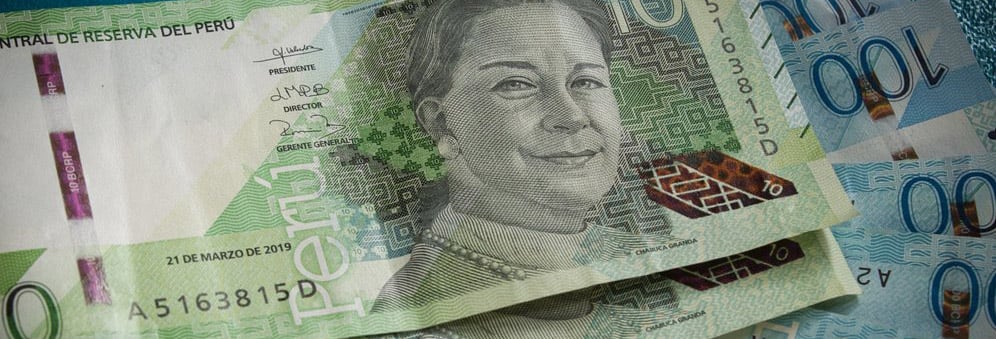Privileged location
Peru is the third largest country in South America that with its 1,285,215.60 km2 is strategically located in the South Pacific, bordering the Pacific Ocean to the west, Chile to the south, Brazil and Bolivia to the east, and Colombia and Ecuador to the north. This nation is recognized as a regional center in the Pacific area, which consolidates the country as an effective bridge between the markets of South America, Asia and the United States, as a potential maritime and air HUB in the Port and Airport of Callao.
From a geostrategic point of view, this country is maritime due to its access to the sea with a coastline of 3,080 km, but it is also Amazonian because it shares forests and great biodiversity with its neighbors. In the same way, it is cataloged bi-oceanic due to the international positioning and projection that the Amazon River brings to the Atlantic.
In this way, Peru has a high geostrategic value given its central location and bi-oceanic condition, which are vital for establishing an important bridge for land and air communications in South America. Thanks to the 4 hydrographic basins of this nation, interconnection and commercial, industrial and population exchange abroad are facilitated. Finally, thanks to being maritime and bi-oceanic, shipping trade is established with all the continental and island countries of the Pacific and Atlantic Basins. This is vital since, according to figures from PROMPERÚ, almost 90% of the international trade of this nation is transported by sea.
It is important to highlight that, in the dynamics of trade, the sea is a vital means of communication for the fast, safe and efficient transport of large volumes of cargo.
Sustained economic growth
In accordance with ProInversión, the state agency in charge of promoting and facilitating the nation's investment, Peru is one of the Latin American countries that stands out for its macroeconomic stability, which has been essential for its competitiveness. Sustained economic growth over the last 20 years has greatly contributed to the improvement of infrastructure, the development of human capital, the adoption of new technologies and the quality of life of all Peruvians.
Given the economic policy implemented in the country 20 years ago, it has allowed it to become a rapidly expanding economy, with solid macroeconomic indicators that continue to show sustained economic growth, low inflation, low public debt pressure, free availability of foreign currency, a free float, responsible management of public finances, moderate monetary policy, reduction of poverty and trade policy to promote exports with active management of various bilateral and multilateral Free Trade Agreements. This has been one of the pillars in the promotion of private investment that has managed to boost the growth of the domestic market, jointly developing a clear policy of integration with international markets.
According to the agency, this nation expects to obtain an average annual growth of 4.4% of the GDP by 2023, taking advantage of the momentum of public investment and internal demand, as well as the growth of the mining, agricultural, construction, and manufacturing sectors. and services.
For ProInversión, the achievements made in strengthening its macroeconomic policy have allowed it to be positively recognized by risk rating agencies that have maintained Peru's credit rating at a high investment grade level in recent years; with a stable outlook, despite the current situation; while the main institutional investors maintain an appetite for Peru's sovereign bonds.
Support for foreign investment
According to the Ministry of Foreign Affairs, thanks to the execution of clear public policies, the ability to adapt and the creativity of the private sector, Peru has managed to remain an attractive destination for investors. For this reason, the government entity projects a growth of its economy of more than 10% in the coming years.
Due to the above, Peru has established a stable and attractive legal framework to promote private investment, as well as a coherent investment policy that eliminates any type of barrier that affects the investor. This nation has also established regulations to protect the economic stability of investors in the event of sudden changes in legal provisions, thus minimizing government interference in economic activities. In this way, among the main benefits for foreign investors are:
- Non-discriminatory and equal treatment
- Right to free competition
- Free capital transfer.
- Unrestricted access to most economic sectors.
- Guarantee to private property (no expropriations or nationalizations).
- Freedom to acquire shares from national companies.
- Freedom of trade and industry and freedom of export and import.
- Free possession and disposal of foreign currency.
- Free re-export of invested capital.
- Unrestricted access to internal or external credit.
- Free contracting of technology and remittance of royalties.
- Extensive network of international investment agreements and participation in the Investment Committee of the Organization for Economic Cooperation and Development (OECD).
It is important that foreign direct investments be registered with the Private Investment Promotion Agency (ProInversión).
Strong business links
The Peruvian Government has established a development strategy based on an economy open to the world and competitive in its export offer, which has allowed it to consolidate foreign trade in goods and services as an instrument of economic development and poverty alleviation.
According to the Private Investment Promotion Agency (ProInversión), Peru is a member of the following organizations:
- World Trade Organization (WTO)
- Asia Pacific Economic Cooperation Forum (APEC).
- The Pacific Alliance with Chile, Colombia and Mexico.
- The Latin American Integration Association (ALADI)
- Member State of the Southern Common Market (MERCOSUR).
- Andean Community (CAN)
Likewise, this nation has consolidated active commercial integration policies throughout the world and has gained access to larger and more important markets. Currently, the country has the following international trade agreements in force:
- Peru – China Free Trade Agreement
- Trade Promotion Agreement Peru - United States
- Trade Agreement Peru - European Union
- Peru-Japan Economic Association Agreement
- Free Trade Agreement Peru - South Korea
- Peru-Singapore Free Trade Agreement and Peru-Thailand Protocol to Accelerate the Liberalization of Trade in Goods and Trade Facilitation.
- Economic Complementation Agreement (ACE) Peru – MERCOSUR
- Trade Integration Agreement Peru – Mexico
- Andean Community (CAN)
- Peru-Canada Free Trade Agreement
- Peru-Chile Free Trade Agreement
- Asia Pacific Economic Cooperation Forum (APEC).
- World Trade Organization (WTO)
- Comprehensive and Progressive Treaty for Trans-Pacific Partnership (CPTPP)
- Free Trade Agreement Peru - Australia
- Pacific alliance
This South American nation has found in trade agreements a valuable instrument to attract foreign direct investment and boost the productivity of its companies. It has also achieved technology transfer through the lower cost of importing capital goods and quality inputs. These agreements have allowed the country to replicate international standards and improve its management and logistics practices.
Broad investment portfolio
The Peruvian territory is a land rich and abundant that has allowed it to be among the five most biodiverse countries in the world, since it also has 84 of the 104 life zones, known as biogeographic regions that share similar climatic parameters, such as temperature and rainfall. For this reason, it has a wide variety of ecological levels and productive ecosystems, and brings together 28 of the 32 types of climates that can be found on the planet.
Thanks to these characteristics, this country offers international investors a wide range of investment opportunities in potential sectors such as agriculture, energy, construction, tourism and hydrocarbons.
In turn, Peru has rich deposits of copper, silver, gold, lead, zinc, natural gas, oil, urea and lithium, and a legal framework that promotes private investment, which makes it one of the most attractive destinations for mining investment.
.jpeg)




